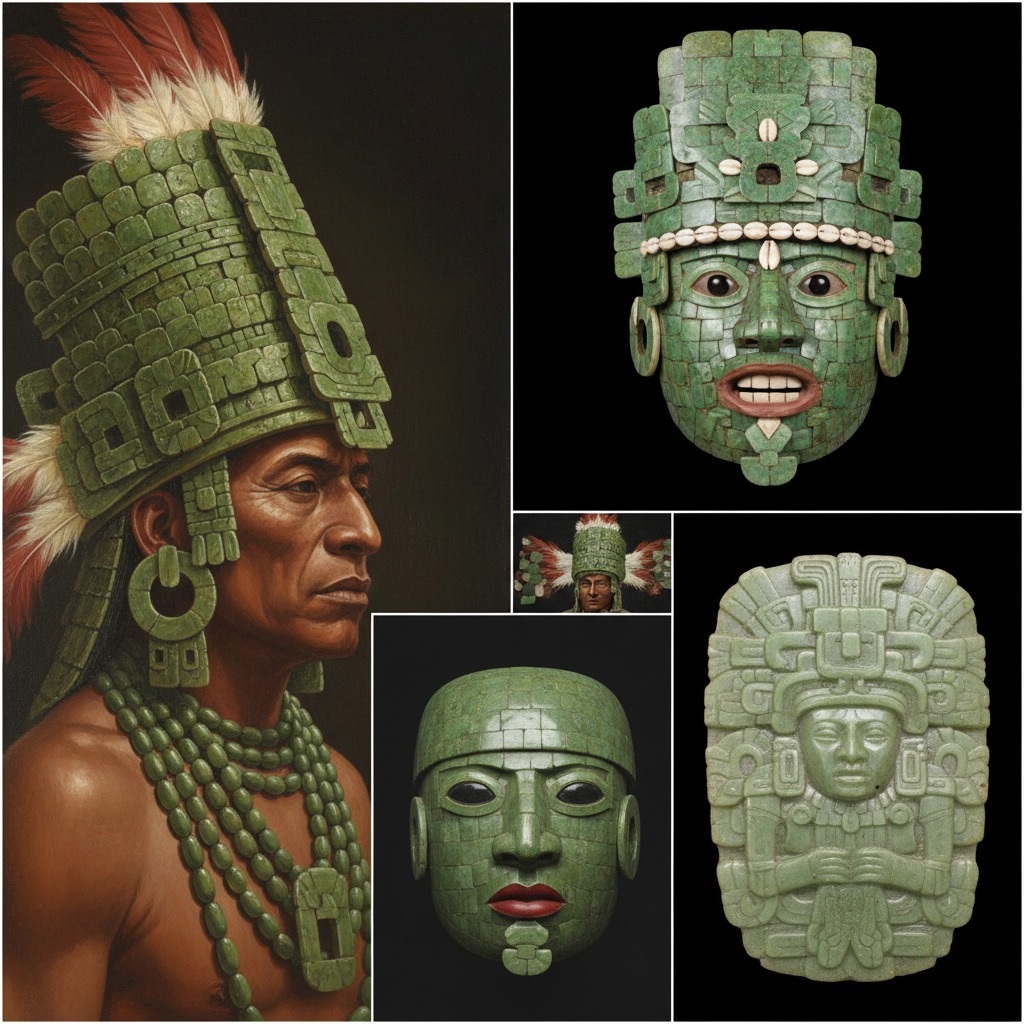Palenque’s Green Legacy: Jade Rulers and Rituals of the Maya

The air in the jungle-choked ruins of Palenque, Chiapas, still hums with the whispers of an ancient civilization. For centuries, its grand temples and palaces lay shrouded in emerald green, their secrets guarded by time and dense foliage. But through the tireless work of archaeologists, the opulent world of the Classic Maya is slowly being unearthed, piece by precious piece.
Imagine the gasp of discovery in 1952, when Alberto Ruz Lhuillier, delving deep beneath the Temple of the Inscriptions, finally breached the tomb of K’inich Janaab’ Pakal, Palenque’s greatest ruler. It was an archaeological revelation, a chamber filled not with dusty bones, but with the vibrant remnants of a king’s final journey. And there, covering his royal face, was the magnificent funerary mask – a mosaic of jade tesserae, each piece meticulously cut and polished, the eyes inlaid with shell, the nose adorned with a delicate ornament. This wasn’t merely a mask; it was a portal to the underworld, safeguarding the king’s spirit. (This links directly to the top-right jade mask in the collage)
Further excavations across the Maya lowlands, from the ceremonial centers of Tikal in modern-day Guatemala to the revered city-states of the Yucatán Peninsula, have consistently affirmed the unparalleled status of jade. It was more than a precious stone; it was yax tun, “first stone” or “precious green stone,” a symbol of water, fertility, and renewal – the very essence of life and royalty.
Consider the meticulous artistry required for a craftsman in ancient Copán, Honduras, or even within Pakal’s own royal workshops at Palenque, to shape a raw jade boulder into the intricate components seen in the masks. Each piece, perfectly fitted, reflects a profound understanding of geology and a mastery of lapidary techniques without metal tools. The striking red cinnabar often found on these masks, coloring the lips, speaks to further ritual significance, perhaps symbolizing blood or the dawn. (This references the bottom-left jade mask with red lips)
The rulers themselves, like the powerful K’inich Janaab’ Pakal, were living embodiments of these sacred concepts. The stunning portrait, perhaps a mural fragment or a reconstructed depiction from the murals of Bonampak, vividly illustrates how a K’uhul Ajaw (Divine Lord) of Palenque would have appeared in ceremonial splendor. His colossal headdress, a towering edifice of polished jade, intricately carved and adorned with vibrant quetzal feathers, would have announced his divine connection and earthly power. His multi-strand jade necklace, each bead a testament to wealth and status, would have shimmered under the tropical sun. These were not mere ornaments; they were extensions of his divine persona, connecting him to the gods and his ancestral lineage. (This describes the large painted portrait in the left panel of the collage)
And then there are the narrative plaques, like the one discovered at El Perú-Waka’, Guatemala, or those unearthed from the royal tombs in Calakmul, Mexico. These exquisitely carved jade pieces, often depicting enthroned rulers, powerful deities, or mythological scenes, served as portable altars or personal adornments, carrying profound ideological messages. Their intricate iconography, deciphered by epigraphers, tells stories of accession, sacrifice, and the cosmic order, reinforcing the ruler’s legitimacy and the foundational myths of their civilization. (This refers to the bottom-right carved jade plaque)
The ongoing archaeological endeavor at Palenque and other Maya sites continues to peel back layers of time, revealing not just artifacts, but the sophisticated worldview of a people who saw the sacred in stone, and whose rulers truly embodied a green, enduring legacy. Each jade artifact, whether a king’s mask or a humble bead, is a tangible link to a civilization that understood the profound power of beauty, ritual, and the eternal cycle of life and death.
